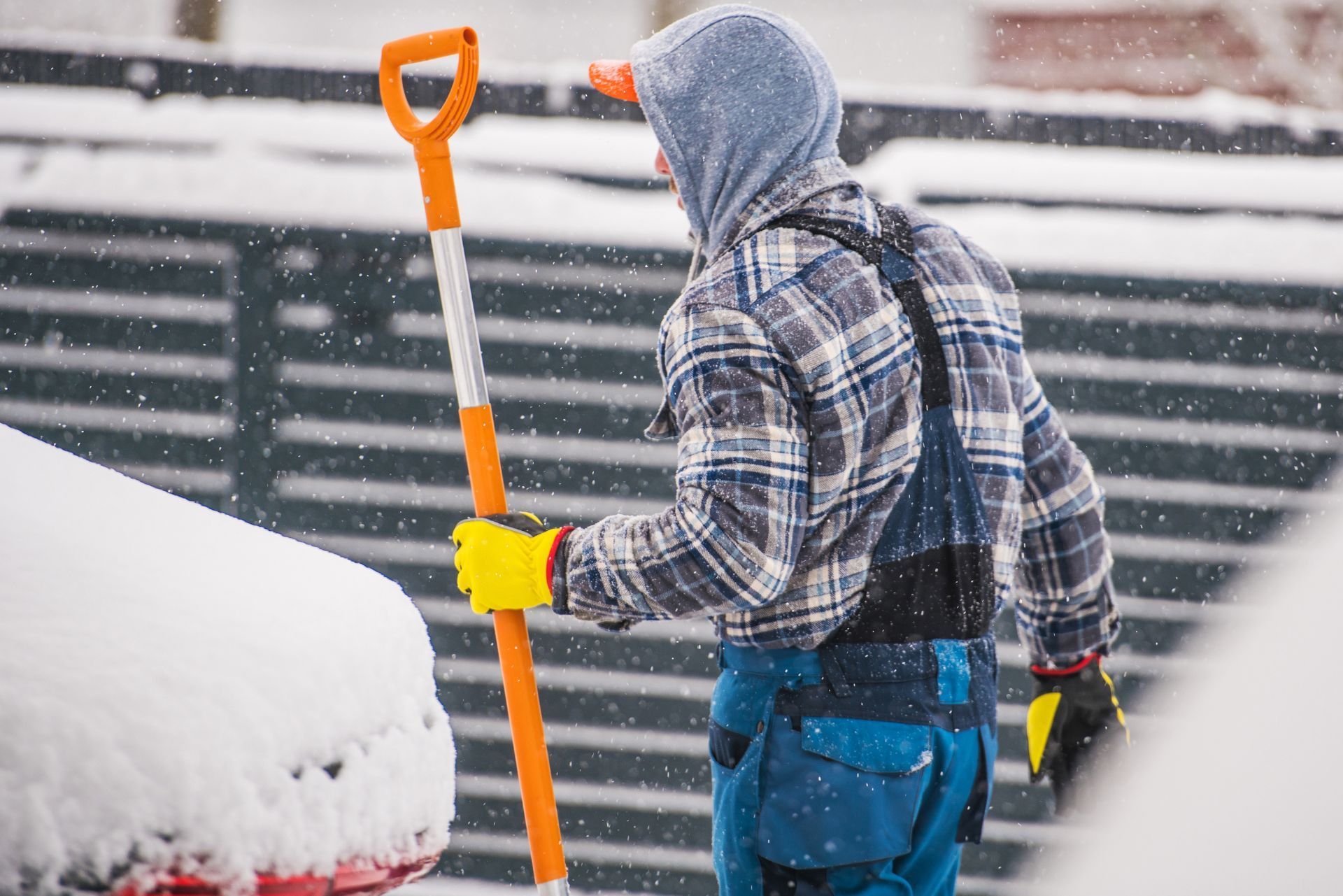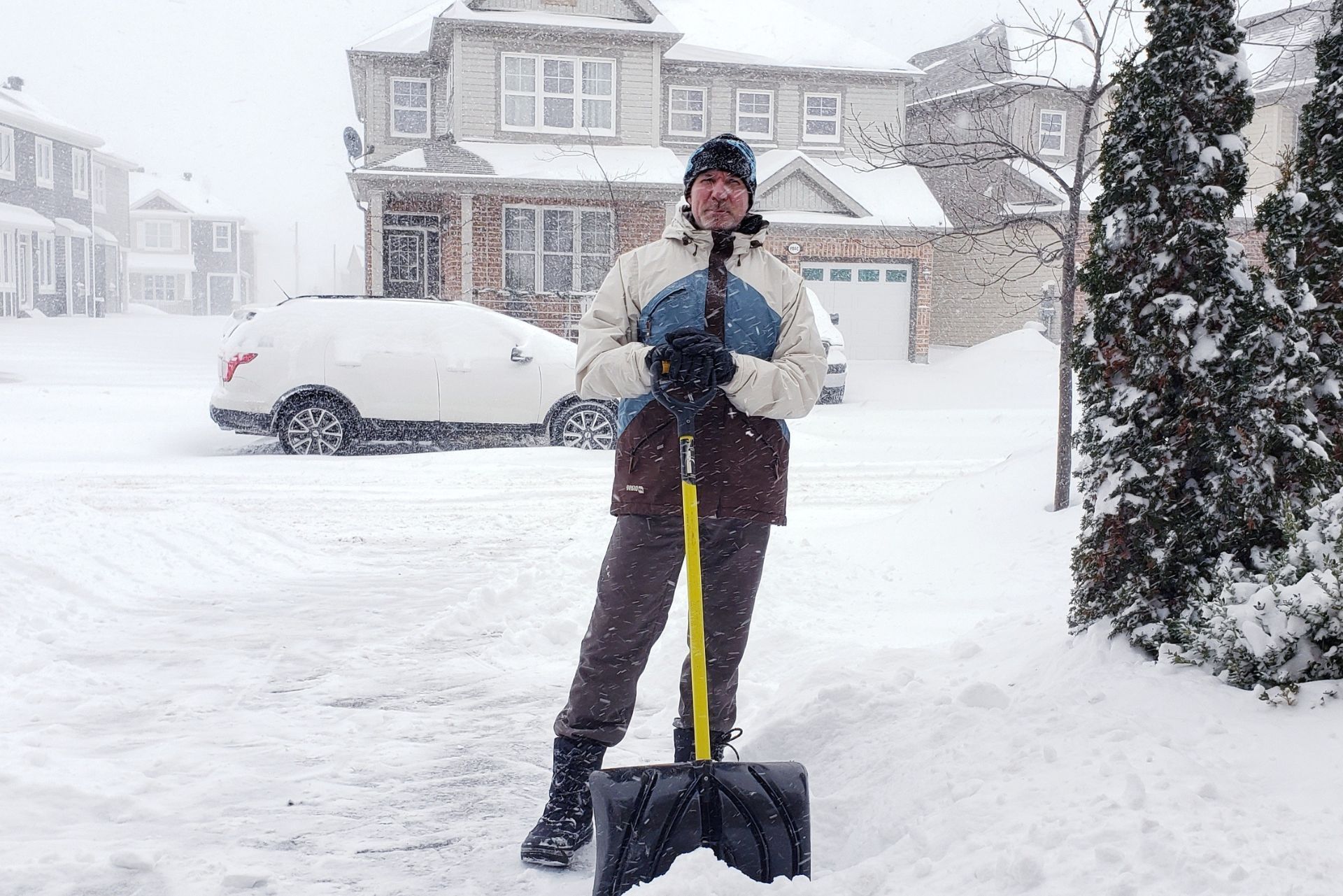Colorado Snow Removal Contractor Insurance

8:30am - 5:00pm Mon-Fri
We'll Reply in 15min*
Index
Understanding the Insurance Landscape for Snow Removal Contractors in Colorado
Key Insurance Policies for Snow Removal Contractors
Legal and Regulatory Considerations Affecting Insurance
Managing Insurance Costs and Risks in a Challenging Market
Looking Ahead: The Future of Snow Removal Insurance in Colorado
Contact Us
Phone
303-421-5123
Location
9035 Wadsworth Parkway
Suite 2730B
Westminster, CO 80021
Operating a snow removal business in Colorado comes with unique challenges, especially when it comes to securing the right insurance coverage. With the state’s unpredictable winters and evolving legal landscape, contractors must navigate rising insurance costs, liability risks, and regulatory changes to protect their operations and clients. This comprehensive guide breaks down everything snow removal contractors in Colorado need to know about insurance—from market trends and legal requirements to practical tips for managing risks and costs.
Colorado’s
insurance market has become notably challenging in recent years. The state now ranks as the sixth-costliest for
homeowners’ insurance, with premiums soaring by 58% between 2018 and 2023. This increase reflects broader pressures that also impact contractors, including those in snow removal services. Understanding these dynamics is essential for contractors aiming to maintain profitability while safeguarding their businesses. For more context on the state’s insurance environment,
programbusiness.com offers valuable insights into the rising insurance premiums in Colorado.
Understanding the Insurance Landscape for Snow Removal Contractors in Colorado
Snow removal contractors face a complex insurance market shaped by rising costs and shrinking coverage options. General liability, workers’ compensation, and business owner’s policies are essential, but premiums have been climbing steadily. According to Insureon, snow removal businesses typically pay around $43 per month for general liability insurance, $98 for a business owner's policy, and $254 for workers' compensation insurance. These costs can add up quickly, especially for smaller operations.
The insurance market’s volatility in Colorado is partly due to a pullback by carriers, as noted by Insurance Business America. Fewer insurers are willing to underwrite construction-related risks, including snow removal, leading to higher premiums and more limited coverage. This trend has forced many contractors to reassess their risk management strategies and insurance needs.
Why Are Insurance Premiums Rising?
Several factors contribute to escalating insurance costs in Colorado. Increasing claims related to weather damage and liability have strained insurers’ resources. Additionally, legislative changes, such as the 2018 Senate Bill 18-062 (the "Snow Removal Service Liability Act"), have altered how liability is assigned in snow removal contracts. This law reclassifies construction defects as accidental, compelling insurers to defend builders in such cases, which can increase claims and costs for contractors involved in snow removal services.
These legal shifts, combined with the overall tightening of insurance markets, have made it more expensive and complicated for snow removal contractors to obtain comprehensive coverage. Contractors must stay informed about these developments to ensure their policies adequately protect them from emerging risks. Furthermore, the unique geographical and climatic conditions in Colorado, characterized by heavy snowfall and unpredictable weather patterns, exacerbate these challenges. Contractors must not only navigate the complexities of insurance but also invest in robust safety training and equipment maintenance to mitigate risks and reduce the likelihood of claims. As the industry evolves, staying proactive in both risk management and insurance procurement will be crucial for long-term sustainability.
Moreover, the competitive landscape for snow removal services in Colorado adds another layer of complexity. With numerous contractors vying for contracts, particularly during peak winter months, the pressure to keep prices low can lead to corners being cut in terms of safety and compliance. This can result in a higher incidence of accidents or damage, further driving up insurance costs. As a result, contractors must balance the need to remain competitive with the imperative to maintain high safety standards and secure adequate insurance coverage. Engaging with industry associations and participating in risk-sharing programs may provide additional resources and support, helping contractors navigate the intricate insurance landscape while ensuring they are adequately protected against potential liabilities.

Key Insurance Policies for Snow Removal Contractors
Snow removal contractors require a tailored insurance portfolio to cover the unique risks of their work. The primary policies to consider include general liability, workers' compensation, and business owner’s policies, each serving a distinct purpose.
General Liability Insurance
General liability insurance is critical for protecting contractors against third-party claims of bodily injury, property damage, or personal injury arising from their operations. For snow removal contractors, this might include slip-and-fall accidents on cleared properties or damage caused by equipment.
Given the high-risk nature of snow and ice removal, having robust general liability coverage is essential. However, inadequate contractual liability coverage can expose contractors to significant financial risks, as highlighted in a 2025 study by Snow & Ice America. Clear contract terms and sufficient insurance limits help mitigate these risks. Furthermore, contractors should consider the geographical areas they serve, as certain regions may have higher incidences of claims due to weather conditions, which can influence the cost and terms of their coverage.
Workers’ Compensation Insurance
Workers’ compensation insurance covers medical expenses and lost wages for employees injured on the job. Snow removal is physically demanding and often performed in hazardous conditions, making this coverage indispensable. The average monthly cost for workers' compensation insurance in this sector is approximately $254, according to industry data.
Ensuring proper workers’ comp coverage not only protects employees but also shields the business from costly lawsuits and regulatory penalties. Additionally, contractors should be proactive in implementing safety training programs and using proper equipment to minimize the risk of injuries, which can also lead to lower premiums over time. Regularly reviewing and updating safety protocols can enhance workplace safety and demonstrate to insurers that the contractor is committed to reducing risks.
Business Owner’s Policy (BOP)
A business owner’s policy bundles general liability and property insurance, often at a more affordable rate than purchasing each separately. This package can cover damage to equipment, tools, and business property—assets that are vital for snow removal operations.
Contractors should evaluate whether a BOP suits their business size and risk profile, balancing coverage needs with premium costs. Moreover, it is wise to assess additional endorsements that can be added to a BOP, such as coverage for business interruption, which can be particularly relevant during severe winter storms when operations may be halted. Understanding the full scope of what a BOP can offer allows contractors to tailor their insurance to better fit their specific operational needs and potential vulnerabilities in the market.
Legal and Regulatory Considerations Affecting Insurance
Colorado’s legal environment has a direct impact on insurance requirements and liabilities for snow removal contractors. Understanding these regulations is crucial for compliance and risk management. As the snow removal industry continues to grow, contractors must navigate a complex web of laws that not only dictate operational practices but also influence their financial stability and insurance coverage.
The Snow Removal Service Liability Act
Passed in August 2018, Senate Bill 18-062, known as the "Snow Removal Service Liability Act," significantly changed liability rules for snow removal contractors. This legislation classifies construction defects related to snow and ice removal as accidental rather than intentional, requiring insurers to defend builders in such cases. This shift increases the scope of coverage insurers must provide and affects how contractors negotiate contracts and insurance policies. As a result, contractors may find themselves needing to reassess their insurance strategies, ensuring they have adequate coverage to protect against potential claims that arise from their snow removal activities.
For a detailed discussion on this law’s implications, Summit Daily offers an insightful analysis. Additionally, it is essential for contractors to stay informed about ongoing legislative changes that could further impact their liability and insurance needs, as the legal landscape surrounding snow removal continues to evolve in response to changing weather patterns and public safety concerns.
Municipal and Regional Insurance Requirements
In addition to state laws, local municipalities may impose specific insurance requirements for snow removal contractors. For example, some cities require contractors to carry minimum liability limits or specific endorsements to operate within their jurisdiction. These regulations can vary widely and sometimes create barriers for small operators. Understanding the nuances of local regulations is vital for contractors, as non-compliance can lead to fines, loss of contracts, or even legal action. Furthermore, contractors may need to invest time and resources into obtaining the necessary certifications and insurance endorsements to meet these local mandates.
A report by
PMR Market Research highlights how regional differences, such as Massachusetts’ mandate for certified snow contractors to hold $1 million in liability insurance, complicate efforts toward national standardization and affect business operations. This patchwork of regulations not only adds complexity to the operational landscape for snow removal businesses but also underscores the importance of having a knowledgeable insurance broker who can navigate these requirements effectively. Moreover, as municipalities increasingly prioritize safety and liability management, contractors must remain vigilant and proactive in adapting their insurance policies to align with evolving local standards and expectations.
Managing Insurance Costs and Risks in a Challenging Market
With insurance premiums rising and coverage becoming more restrictive, snow removal contractors must adopt proactive strategies to manage costs and protect their businesses effectively.
Building Strong Contracts and Clear Liability Terms
One of the most effective ways to reduce liability exposure is through well-drafted contracts that clearly define the scope of work, responsibilities, and insurance requirements. Contractors should work with legal professionals to ensure contracts include indemnification clauses and specify insurance coverage minimums.
Clear contract terms can prevent disputes and help insurers better understand the risks, potentially leading to more favorable premium rates. Additionally, incorporating specific performance metrics and timelines within contracts can further delineate expectations, which not only protects the contractor but also enhances client satisfaction. This clarity can lead to repeat business and referrals, creating a more robust client base that can offset rising insurance costs.
Partnering with Knowledgeable Insurance Brokers
Given the complexity of the Colorado insurance market, working with brokers who specialize in construction and snow removal insurance is invaluable. These experts can help identify coverage gaps, negotiate better terms, and keep contractors informed about regulatory changes and market trends.
Ryan Daniele, senior vice president of strategic marketing at The MJ Companies, notes that many businesses are currently delaying expansion plans due to insurance uncertainties, underscoring the importance of expert guidance in navigating the market. More on this perspective can be found at ColoradoBiz. Furthermore, brokers can provide insights into emerging risks associated with climate change and extreme weather patterns, which are increasingly relevant for snow removal contractors. By understanding these risks, contractors can tailor their insurance coverage and operational strategies to mitigate potential impacts.
Implementing Safety Protocols and Training
Reducing workplace injuries and property damage through rigorous safety programs can lower claims frequency and severity, which insurers consider when pricing policies. Regular employee training, proper equipment maintenance, and adherence to best practices in snow removal not only protect workers and clients but also contribute to more stable insurance premiums.
Moreover, fostering a culture of safety within the organization can lead to enhanced employee morale and productivity. When workers feel safe and valued, they are more likely to perform their tasks efficiently and with greater attention to detail. Implementing a feedback loop where employees can report safety concerns or suggest improvements can further strengthen this culture. By engaging employees in safety initiatives, contractors not only reduce their risk exposure but also empower their workforce, creating a more committed and cohesive team ready to tackle the challenges of snow removal in a demanding environment.

Looking Ahead: The Future of Snow Removal Insurance in Colorado
The insurance landscape for snow removal contractors in Colorado is likely to remain dynamic. Market pressures, legislative changes, and evolving risk profiles will continue to influence coverage availability and costs.
Margaret Jackson’s reporting highlights that insurers are tightening underwriting standards or even exiting the Colorado market, which limits options for businesses and drives up prices. Contractors must stay agile, continuously reassessing their insurance needs and risk management approaches to adapt to these shifts. More details on these market dynamics can be found at ColoradoBiz.
Despite these challenges, opportunities exist for contractors who prioritize comprehensive coverage, maintain strong safety records, and engage proactively with insurance professionals. Staying informed and prepared is the best way to ensure business continuity and growth amid Colorado’s evolving snow removal insurance environment.
Moreover, the increasing frequency and severity of winter storms due to climate change are likely to play a significant role in shaping future insurance policies. As snowfall patterns become more unpredictable, insurers may need to adjust their models to account for these new realities, potentially leading to more tailored coverage options for snow removal contractors. This could also mean that businesses might need to invest in advanced technology, such as GPS tracking and weather forecasting tools, to better manage their operations and mitigate risks associated with extreme weather conditions.
Additionally, the rise of gig economy platforms and on-demand services in the snow removal sector is transforming the market landscape. Contractors who leverage these platforms may find themselves facing unique insurance challenges, such as the need for coverage that accommodates flexible work arrangements and varying project scopes. As these trends continue to evolve, staying ahead of the curve will require contractors to not only adapt their insurance strategies but also embrace innovative business models that align with the changing demands of their clients.
Conclusion
Snow removal contractors in Colorado face a uniquely challenging insurance market marked by rising premiums, regulatory changes, and increasing liability risks. Understanding the key insurance policies—general liability, workers’ compensation, and business owner’s policies—is fundamental to protecting a snow removal business. Additionally, staying abreast of legal developments such as the Snow Removal Service Liability Act and local insurance mandates is essential for compliance and risk reduction.
By investing in strong contracts, partnering with knowledgeable brokers, and implementing rigorous safety protocols, contractors can better manage insurance costs and safeguard their operations. While the market remains tough, informed and proactive contractors will be best positioned to navigate these challenges and thrive in Colorado’s demanding winter service industry.




